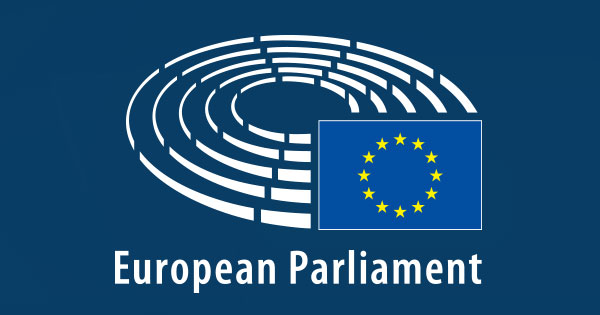New EU Directive on Accessibility of Public Websites and Mobile Apps
Share on social media
On 26 October 2016 the European Parliament approved the directive on making the websites and mobile apps of public sector bodies more accessible. This means that people with disabilities – especially persons with vision or hearing impairments – will have better access to the websites and mobile applications of public services.
 On 26 October 2016 the European Parliament approved the directive on making the websites and mobile apps of public sector bodies more accessible. This means that people with disabilities – especially persons with vision or hearing impairments – will have better access to the websites and mobile applications of public services.
On 26 October 2016 the European Parliament approved the directive on making the websites and mobile apps of public sector bodies more accessible. This means that people with disabilities – especially persons with vision or hearing impairments – will have better access to the websites and mobile applications of public services.
The directive had first been proposed by the Commission in 2012. Following negotiations between the European Parliament, the Council and the Commission, an updated version of the directive was agreed in May 2016, and adopted by the Council in July 2016. After the European Parliament's favourable vote, the directive will soon enter into force, and Member States will have 21 months to transpose the Directive into national legislation.
The background to the new directive is clearly laid out in the approved text.
"(2) In the context of this Directive, accessibility should be understood as principles and techniques to be observed when designing, constructing, maintaining, and updating websites and mobile applications in order to make them more accessible to users, in particular persons with disabilities."
"(5) Several Member States have adopted measures based on internationally used guidelines for the design of accessible websites, but those measures often relate to different versions or compliance levels of those guidelines, or have introduced technical differences in respect of accessible websites at national level."
"(6) Suppliers of accessible websites, mobile applications and related software and technologies include a large number of small and medium-sized enterprises (SMEs). Such suppliers, and SMEs in particular, are discouraged from entering into business ventures outside their national markets. Due to the differences between Member States in accessibility specifications and regulations, suppliers' competitiveness and growth are hampered by the additional costs they would incur in the development and marketing of cross-border web accessibility-related products and services."
"(9) This Directive aims to ensure that the websites and mobile applications of public sector bodies are made more accessible on the basis of common accessibility requirements. The approximation of national measures at Union level, based on the agreed accessibility requirements for the websites and mobile applications of public sector bodies, is necessary in order to put an end to fragmentation of the internal market. It would reduce uncertainty for developers and would foster interoperability. The use of accessibility requirements which are technology-neutral will not hamper innovation, and may even stimulate it."
and "(11) Citizens would benefit from wider access to public sector services through websites and mobile applications and would receive services and information facilitating their daily lives and the enjoyment of their rights across the Union, in particular their right to move and reside freely within the territory of the Union, their freedom of establishment and their freedom to provide services."
There are some important clarifications in the text, too:
"(19) Content of websites and mobile applications includes textual as well as non-textual information, downloadable documents and forms, and two-way interaction such as the processing of digital forms and the completion of authentication, identification and payment processes."
"(20) The accessibility requirements set out in this Directive should not apply to content which is to be found exclusively on mobile devices, or to user agents for mobile devices, which are developed for closed groups of users or for specific use within certain environments and which are not available to and used by large parts of the public."
Member States of the EU shall bring into force the laws, regulations and administrative provisions necessary to comply with this Directive by 21 months after the date of entry into force of the Directive.
Update: DIRECTIVE (EU) 2016/2102 OF THE EUROPEAN PARLIAMENT AND OF THE COUNCIL of 26 October 2016 on the accessibility of the websites and mobile applications of public sector bodies was published in the Official Journal of the Eurioean Union on 2.12.2016.
Download the Official Journal text in PDF format from the right-hand panel in PDF format.
Other EU languages, HTML and WORD versions of the officlal text are published at the EUR-LEX Website.
ENAT's Managing Director, Ivor Ambrose comments:
"Sixteen years ago I had the privilege to work at the European Commission where I was part of the team which drafted a text for what became the "e-Europe" initiative. A lot of work has been done since then to introduce and improve accessibility across all aspects of the digital economy. However, as with many things in Europe, different countries set their own targets and followed their own paths in this domain, leading to a degree of fragmentation in concepts, methods and results. This has led to an uneven implementation of e-accessibility in Europe, as shown by the Commission's studies in 2010 and 2011. With the new EU directive we should finally see a harmonised set of rules being adopted, supporting all EU citizens and visitors, especially those with disabilities, in gaining access to online public services. From ENAT's perspective I also welcome the fact that tourism websites and apps managed by public Destination Management Organisations and authorities will be providing content that is accessible for everyone. This will contribute to our wider aim of making Europe a destination for all visitors."
